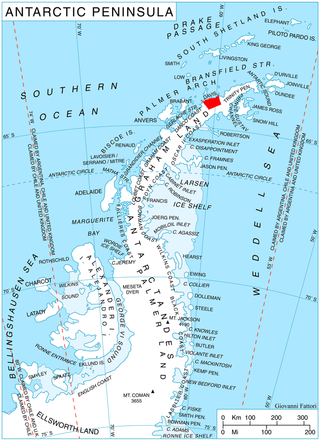
Alto Rio Doce is a Brazilian municipality in the state of Minas Gerais. As of 2020 its population is estimated to be 10,859.

The Santa Lucía River is a river in Uruguay.
Frederico Westphalen is a southern Brazilian town located in the state of Rio Grande do Sul.
Alto Alegre, Rio Grande do Sul is a municipality in the state of Rio Grande do Sul, Brazil. As of 2020, the estimated population was 1,613.
The Rural Municipality of Blanshard is a former rural municipality (RM) in the Canadian province of Manitoba. It was originally incorporated as a rural municipality on December 22, 1883. It ceased on January 1, 2015 as a result of its provincially mandated amalgamation with the RM of Saskatchewan and the Town of Rapid City to form the Rural Municipality of Oakview.

São Gotardo is a Brazilian municipality located in the northwest of the state of Minas Gerais. Its population as of 2020 was 35,782 people and its land area is 854 km2. The city belongs to the mesoregion of Triângulo Mineiro e Alto Paranaiba and to the microregion of Patos de Minas. It became a municipality in 1915.

The Santa Teresa Tram, or Tramway, is a historic tram line in Rio de Janeiro, Brazil. It connects the city's centre with the primarily residential, inner-city neighbourhood of Santa Teresa, in the hills immediately southwest of downtown. It is mainly maintained as a tourist attraction and is nowadays considered a heritage tramway system, having been designated a national historic monument in 1985. The line has a very unusual gauge: 1,100 mm. The main line is 6.0 kilometres long.

The Inírida is a river in the north-west of South America, in the territory of Colombia, the largest tributary of the Guaviare.
The Back River is a 1.7-mile-long (2.7 km) river in Friendship, Maine, which empties into the estuary of the Medomak River.

São Benedito do Rio Preto is a municipality in the state of Maranhão in the Northeast region of Brazil.

The April 2010 Rio de Janeiro floods and mudslides was an extreme weather event that affected the State of Rio de Janeiro in Brazil in the first days of April 2010. At least 212 people died, 161 people have been injured, while at least 15,000 people have been made homeless. A further 10,000 homes are thought to be at risk from mudslides, most of them in the favelas, the shanty towns built on the hillsides above downtowns. Damage from the flooding has been estimated at $23.76 billion reais, about 8% of the gross domestic product (GDP) of Rio de Janeiro State.

Kasabova Glacier is the 6 km long and 3.5 km wide glacier on Davis Coast in Graham Land on the Antarctic Peninsula. Draining the slopes of Mount Bris, Chubra Peak, Sredorek Peak and Chanute Peak in Korten Ridge, the glacier flows northwestwards to enter Orléans Strait at the head of Lanchester Bay.
Bogujevac is a village in the municipality of Kuršumlija, Serbia. According to the 2002 census, the village has a population of 84 people.

A series of floods and mudslides took place in January 2011 in several towns of the Mountainous Region, in the Brazilian state of Rio de Janeiro. Casualties occurred in the cities of Nova Friburgo, Teresópolis, Petrópolis, Bom Jardim, Sumidouro and São José do Vale do Rio Preto. The floods caused at least 916 deaths, including 424 in Nova Friburgo and 378 in Teresópolis. While local media claims that the combination of floods, mudslides and landslides in Rio de Janeiro became the worst weather-related natural disaster in Brazilian history, some contend that a similar weather-related tragedy that took place in the same state in 1967 was much deadlier, and that an estimated 1,700 people lost their lives on that occasion.
The Estádio Edgar Borges Montenegro, nicknamed Edgarzão, is a football stadium located in the city of Assu, in the state of Rio Grande do Norte, it belongs to the Liga Assuense de Desportos and has a maximum capacity of 4,000 people. It is the home stadium of Associação Sportiva Sociedade Unida.
Rio das Pedras is a region of Rio de Janeiro, but not officially recognized as a neighborhood. The favela sits in Rio de Janeiro’s West Zone by the neighborhood of Itanhangá. Rio das Pedras’ borders are defined by the Tijuca National Park, the Tijuca Lagoon, and private land designated for the expansion of Barra da Tijuca.

Chuchuliga Glacier is the 14 km long and 12 km wide glacier on Oscar II Coast, Graham Land in Antarctica situated southwest of Dzhebel Glacier, northeast of Stob Glacier and south-southeast of Archer Glacier. It is draining from the slopes of Bruce Plateau, and flowing south-southeastwards to join Crane Glacier.
Terreirão do Rio Bonito is a region of Rio de Janeiro, but not officially recognized as a neighborhood.
Eugenio Saenz is a census-designated place (CDP) in Starr County, Texas, United States. It is a new CDP formed from part of the old La Victoria CDP prior to the 2010 census with a population of 159.

New Year Cove is the 1.7 km wide bay indenting for 2.45 km the southeast coast of Weddell Island in the Falkland Islands. It is entered north of Hadassah Point and south of Circum Point and centred at 51°56′30″S60°54′30″W.










